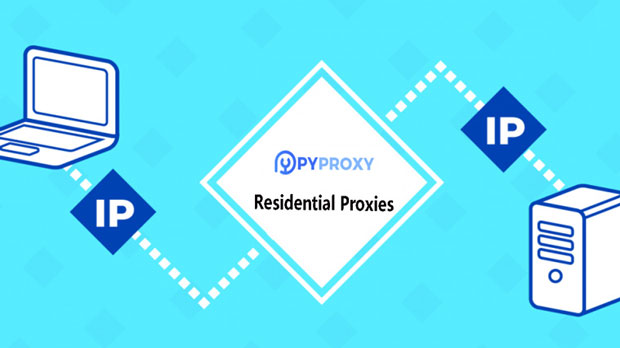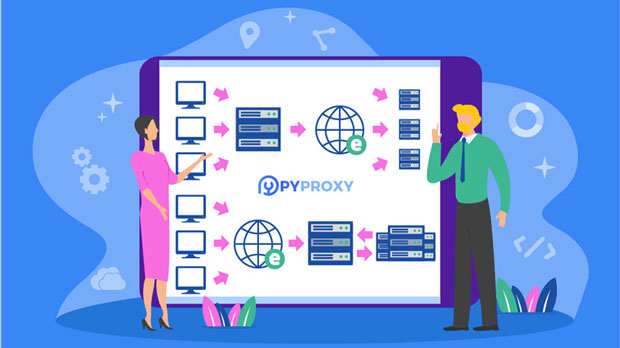For businesses and individuals seeking customized proxy solutions, SSL Proxy and PYPROXY present distinct advantages depending on specific needs. Both platforms cater to users who require highly tailored proxy services, offering flexible, robust solutions ideal for privacy, security, and scalability. SSL Proxy stands out for its focus on streamlined processes and easy scalability, making it a strong choice for e-commerce, data scraping, and security-conscious businesses. PYproxy, on the other hand, is tailored more for developers and technical teams looking for granular control and customizable proxy configurations. This article delves into which types of users benefit most from these solutions and how both platforms can meet their needs. Understanding SSL Proxy and PYproxyBoth SSL Proxy and PYproxy are designed to address the growing demand for sophisticated, scalable, and customizable proxy solutions. SSL Proxy is more suited for users who need a simple, easy-to-integrate proxy service with minimal technical complexity. It serves industries like e-commerce, SEO, and social media management where proxy use is frequent but typically does not require deep technical expertise. PYproxy, conversely, offers advanced functionalities, providing developers with the flexibility to fine-tune their proxy configurations for specialized use cases such as data scraping, bypassing geographic restrictions, or even managing multiple IPs for large-scale operations.SSL Proxy: Best for Businesses Seeking Simplicity and ScalabilitySSL Proxy is ideally suited for businesses that require a proxy solution without delving too deeply into technical complexities. Its ease of use, scalability, and reliability make it the go-to option for businesses in the e-commerce, digital marketing, and content delivery sectors.E-commerce Companies: E-commerce businesses benefit from SSL Proxy’s ability to manage multiple accounts and bypass geo-blocking measures that may be in place on various platforms. For example, businesses operating internationally can use SSL Proxy to test the performance of their websites and ads in different regions without restrictions. Moreover, businesses seeking to optimize their product pricing through competitive intelligence can leverage proxy solutions to scrape competitor pricing data seamlessly.SEO and Digital Marketing Professionals: SEO professionals require proxies to scrape search engine results, analyze keywords, and gather data without risking IP bans. SSL Proxy, with its user-friendly setup and wide geographical coverage, helps these professionals conduct their research while maintaining the anonymity and safety of their activities. The scalability feature is crucial for agencies that need to handle hundreds or thousands of proxy requests per day.Content Delivery and Social Media Management: For companies involved in content delivery, managing proxies at scale is essential for preventing rate-limiting and ensuring uninterrupted content streaming. Social media managers also use proxies to manage multiple accounts or to simulate different regions when posting content, improving engagement strategies across global platforms.PYproxy: Best for Developers and Technical TeamsPYproxy is better suited for technical users who require advanced customization and control over their proxy configurations. It’s an ideal tool for developers, data scientists, and IT teams who need flexibility in managing proxy servers, routing requests, and ensuring high performance under heavy loads.Data Scraping and Research Teams: Data scraping requires proxies that are not only capable of bypassing anti-scraping measures but also flexible enough to handle a large volume of requests from different sources. PYproxy provides users with the ability to create advanced scripts for customizing proxy usage, ensuring they can scrape large datasets without being detected by websites. This is especially valuable for companies that rely on data aggregation for market research or business intelligence.Security-Conscious Organizations: Some users, especially in industries like finance, healthcare, and cybersecurity, require highly secure proxy solutions to protect sensitive data while browsing the internet. PYproxy offers the capability to set up dedicated proxies that ensure data privacy and prevent any unauthorized access, which is crucial for these organizations' operations. Users can create their own routing logic, helping them monitor data traffic and enhance security features.Bypassing Geo-blocking and Unblocking Content: Users who wish to access content restricted by geographical boundaries, such as streaming services or localized content, can also benefit from PYproxy’s flexibility. Unlike simpler proxies that may have a limited number of countries or regions, PYproxy allows users to specify precise locations and even rotate IP addresses to ensure seamless access to blocked content.Key Features that Differentiate SSL Proxy and PYproxyUnderstanding the key differences between SSL Proxy and PYproxy is essential for determining which platform suits your needs best.Ease of Use vs. Customization: SSL Proxy provides a more streamlined user experience. It is designed for users who prefer simplicity and a ready-made solution without the need for customization. This makes it ideal for non-technical users and businesses that need a reliable proxy solution with minimal setup time. In contrast, PYproxy offers more customization options, which is a great advantage for developers and technical users who need to fine-tune their proxy settings, control traffic flow, and manage their proxy configurations more granularly.Scalability and Flexibility: While SSL Proxy offers scalability, its features are best suited for smaller to medium-scale operations, particularly in industries like e-commerce and SEO. PYproxy, however, is built for flexibility, allowing users to handle large-scale proxy requests, whether for scraping large datasets or managing high volumes of traffic across multiple projects.Geographical Reach: SSL Proxy generally provides extensive proxy coverage in several regions, making it useful for businesses aiming to expand into new markets. It ensures that users can bypass geo-restrictions effectively. PYproxy, while also offering geo-targeting capabilities, shines in providing granular control over IP management and routing requests from specific locations for businesses with complex requirements.Who Should Choose SSL Proxy or PYproxy?SSL Proxy: Businesses in need of simplicity, scalability, and ease of integration should choose SSL Proxy. It’s an excellent fit for e-commerce platforms, digital marketing agencies, SEO firms, and social media managers who require robust proxy solutions but don’t need deep technical customization.PYproxy: Developers, data scientists, and IT professionals who require a highly flexible, customizable proxy solution should opt for PYproxy. It is ideal for advanced use cases such as data scraping, cybersecurity, or bypassing geo-restrictions with greater precision. PYproxy is also well-suited for large-scale operations that need to handle thousands of requests simultaneously.ConclusionIn conclusion, choosing between SSL Proxy and PYproxy depends on the specific needs and expertise of the user. SSL Proxy is perfect for businesses looking for simplicity and scalability, making it ideal for those who need proxy solutions for e-commerce, SEO, or social media management. On the other hand, PYproxy is designed for developers and technical teams seeking advanced customization and control over their proxy configurations, offering flexibility for large-scale operations and specialized use cases. Both solutions bring significant value to users, providing robust, reliable, and scalable proxy services tailored to the modern digital landscape.
Jun 27, 2025



































































